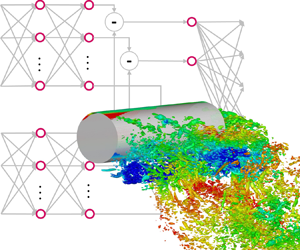Refine listing
Actions for selected content:
1416829 results in Open Access
Isolationism, instrumentalism and fiscal policy
-
- Journal:
- Economics & Philosophy / Volume 41 / Issue 1 / March 2025
- Published online by Cambridge University Press:
- 27 March 2024, pp. 79-97
-
- Article
-
- You have access
- Open access
- HTML
- Export citation
The Authentic Liar
-
- Article
-
- You have access
- Open access
- HTML
- Export citation
THI volume 23 issue 67 Cover and Front matter
-
- Article
-
- You have access
- Export citation
Intersectional Motherhood and Candidate Evaluations in the United States
-
- Journal:
- Politics & Gender / Volume 20 / Issue 3 / September 2024
- Published online by Cambridge University Press:
- 27 March 2024, pp. 598-619
-
- Article
- Export citation
Age-Specific Association of Co-Morbidity With Home-Time After Acute Stroke
-
- Journal:
- Canadian Journal of Neurological Sciences / Volume 52 / Issue 1 / January 2025
- Published online by Cambridge University Press:
- 27 March 2024, pp. 59-67
-
- Article
-
- You have access
- Open access
- HTML
- Export citation
‘Only my family can help’: the lived experience and care aesthetics of being resident on an NHS psychiatric/mental health inpatient dementia assessment ward – a single case study
-
- Journal:
- Ageing & Society / Volume 45 / Issue 6 / June 2025
- Published online by Cambridge University Press:
- 27 March 2024, pp. 1143-1164
- Print publication:
- June 2025
-
- Article
-
- You have access
- Open access
- HTML
- Export citation
Large eddy simulation of flow over a circular cylinder with a neural-network-based subgrid-scale model
-
- Journal:
- Journal of Fluid Mechanics / Volume 984 / 10 April 2024
- Published online by Cambridge University Press:
- 27 March 2024, A6
-
- Article
-
- You have access
- Open access
- HTML
- Export citation
THI volume 23 issue 67 Cover and Back matter
-
- Article
-
- You have access
- Export citation
Automation, job reallocation, occupational choice, and related government policy
-
- Journal:
- Macroeconomic Dynamics / Volume 29 / 2025
- Published online by Cambridge University Press:
- 27 March 2024, e6
-
- Article
- Export citation
Introduction
-
- Journal:
- Economics & Philosophy / Volume 40 / Issue 2 / July 2024
- Published online by Cambridge University Press:
- 27 March 2024, p. 468
-
- Article
-
- You have access
- Open access
- HTML
- Export citation
Precis of The Objects of Credence
-
- Journal:
- Economics & Philosophy / Volume 40 / Issue 2 / July 2024
- Published online by Cambridge University Press:
- 27 March 2024, pp. 469-471
-
- Article
-
- You have access
- Open access
- HTML
- Export citation
Healthcare personnel with laboratory-confirmed mpox in California during the 2022 outbreak
-
- Journal:
- Infection Control & Hospital Epidemiology / Volume 45 / Issue 8 / August 2024
- Published online by Cambridge University Press:
- 27 March 2024, pp. 1003-1005
- Print publication:
- August 2024
-
- Article
-
- You have access
- Open access
- HTML
- Export citation
Paramedics’ Success and Complications in Prehospital Pediatric Intubation: A Meta-Analysis
-
- Journal:
- Prehospital and Disaster Medicine / Volume 39 / Issue 2 / April 2024
- Published online by Cambridge University Press:
- 27 March 2024, pp. 184-194
- Print publication:
- April 2024
-
- Article
- Export citation
Contrasting Approaches to Managing the Debate on Same-Sex Blessing and Same-Sex Marriage in New Zealand and Australia: Applying Insights from Jungian Psychological Type Theory
-
- Journal:
- Journal of Anglican Studies , First View
- Published online by Cambridge University Press:
- 27 March 2024, pp. 1-22
-
- Article
-
- You have access
- Open access
- HTML
- Export citation
The Subterranean Unsettling of Science, Race, and Religion: Obeah, Petroleum Geology, and Risk in Trinidad
-
- Journal:
- Comparative Studies in Society and History / Volume 66 / Issue 3 / July 2024
- Published online by Cambridge University Press:
- 27 March 2024, pp. 501-527
-
- Article
-
- You have access
- Open access
- HTML
- Export citation
FLM volume 983 Cover and Front matter
-
- Journal:
- Journal of Fluid Mechanics / Volume 983 / 25 March 2024
- Published online by Cambridge University Press:
- 27 March 2024, p. f1
-
- Article
-
- You have access
- Export citation
Does Performance Matter? The Influence of Attitudes Towards Welfare State Performance on Voting for Rightwing and Leftwing Populist Parties
-
- Journal:
- Social Policy and Society , First View
- Published online by Cambridge University Press:
- 27 March 2024, pp. 1-15
-
- Article
-
- You have access
- Open access
- HTML
- Export citation
In Defence of (Over)Thinking
-
- Article
-
- You have access
- Open access
- HTML
- Export citation





